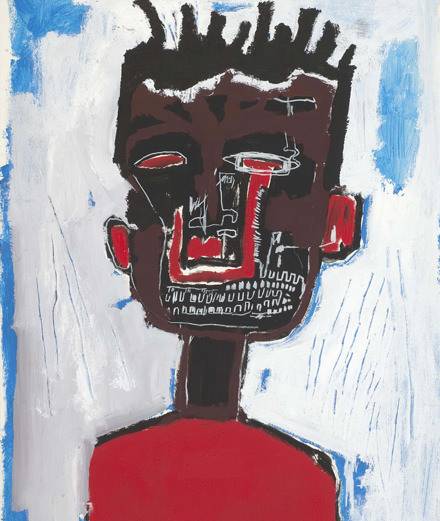

Sitting in a small private room at the Gagosian Gallery’s New York premises, in Chelsea, choreographer William Forsythe faces a wall of art books. From time to time he curiously scans the meticulously organized titles on the shelves while he’s speaking. Being behind the scenes at a blue-chip gallery presumably doesn’t compare to being backstage at a dance performance. After two years immersed in the art world, Forsythe has plenty of astute observations to share. “In theatre, there’s a supposition that if it is not easily given it is being difficult. People are obfuscating, or they’re being impenetrable, or so on and so forth. Whereas it seems that the public engaged with art assumes it’ll have to do some work. And I think that’s a very interesting thing.” This October, Forsythe has a show opening at Gagosian, his first solo presentation with the gallery. When a film of him performing was featured in the Whitney Biennial in 1997, he had already earned international acclaim at the helm of the Ballet Frankfurt, more or less reinventing contemporary ballet on a semi-regular basis after becoming its director in 1984. He achieved such ingenuity in part by drawing on knowledge and ideas from a number of other fields, from philosophy to architecture. This trans-disciplinary inclination, along with his warm and flexible attitude, made him something of a curatorial darling; he subsequently showed work at The Louvre, Tate Modern and the Venice Biennale (four times), among many other institutions. Only since 2015, following his departure from The Forsythe Company – the troupe he founded a decade prior – has art become his main activity.
“Then they come into our context and they’re used poetically, choreographically, they’re very beautiful. Then, [when we’re done], they go back into industrial obscurity.”


Titled Choreographic Objects, his Gagosian exhibition promises to make the most of the venue: a massive, Jean Nouvel-designed building at Paris’s Le Bourget airport. On view will be six “choreographic objects,” an ongoing series Forsythe began in 1991. Visitors will encounter items such as a feather duster, mounds of steel chains and a forest of swinging pendulums, the underlying concepts unfolding in ways both mind-bending and body-contorting. No two “choreographic objects” appear to have much in common on the surface, yet, through equally varied approaches, they engage, evoke, or invite the motion of human bodies in both abstract and literal terms. “There are many things that we have normalized in our lives – physical actions – that we are no longer aware of,” muses Forsythe. “One of the easiest examples is avoidance: if a branch swings out at you, you duck your head.” This reflex in particular seems to have inspired Nowhere and Everywhere at the Same Time No. 2 (2014) – the one with the pendulums. “There’re hundreds of pendulums, all attached to these moving sleds in the ceiling. The only rule is ‘Please do not make contact with the pendulums.’” explains Forsythe. “If you accept the challenge, you walk in, and you discover that under these kinds of conditions you require certain competencies. We’re just basically highlighting what you’ve already learned; these are fundamental categories of being in the world.”
“It has nothing to do with strength, will or strategy… The only way you can stop while holding it is to not be living”
All the pieces, bar one from 2007, were created over the course of the past four years. If technology can be used in an enlightened manner, Forsythe embraces it. In Black Flag (2014), two 60-foot-tall robotic arms each clasp a sheet of pitch-black silk, waving it with godlike power and grace. To orchestrate the motions, Forsythe had to work around the original programming. “They had an actual history of being used in industry,” he explains. “Then they come into our context and they’re used poetically, choreographically, they’re very beautiful. Then, [when we’re done], they go back into industrial obscurity.” But a simple, tech-free premise can be just as impactful too. In Towards the Diagnostic Gaze (2013), a feather duster rests on a stone pedestal, which is engraved with the simple instruction “Hold the object absolutely still.” As anyone who has made a serious effort to do so can attest, this is an impossible task. “You simply can’t do it!” exclaims Forsythe, who was in the midst of cleaning his studio one day before he became sidetracked by this gradual realization. “Your entire body is dilating, imperceptibly, constantly. Your blood pressure, plus your nerves and your muscles, are not in a steady state.” While the robotic limbs depend on humans to decide whether they’re immortal or disposable, the slight quiver of a feather duster reminds us, as humans, of our innate condition. “It has nothing to do with strength, will or strategy… The only way you can stop while holding it is to not be living,” he concludes. In the meantime, Forsythe has been mulling over his own role as an artist who is principally known as a choreographer. “In all the arts, you cannot insist on interpretation. But I think bringing subjects to the table is essentially what artists should do.”
Choreographic Objects, until 22th december, Gagosian Le Bourget. William Forsythe x Ryoji Ikeda, du until 31th december. Grande Halle de la Villette, Paris.






